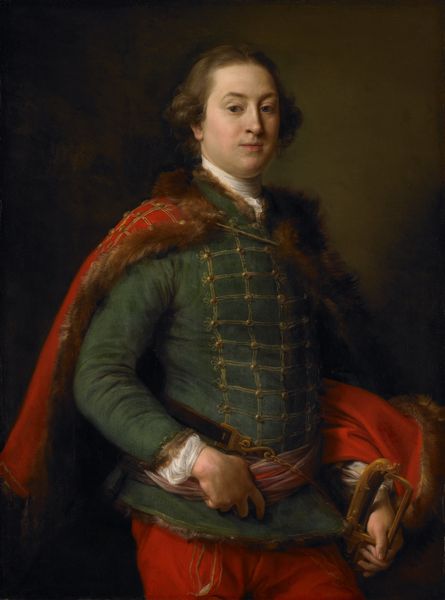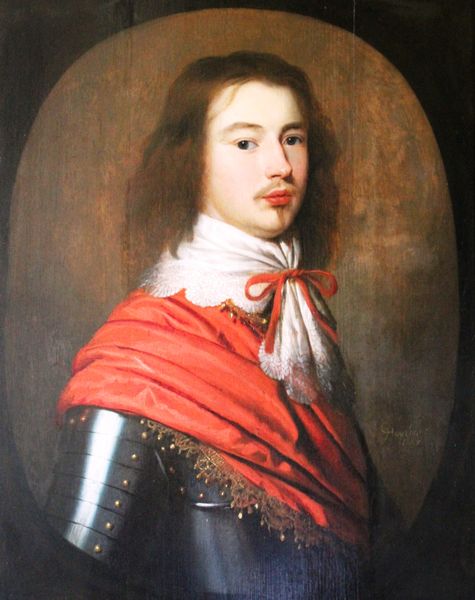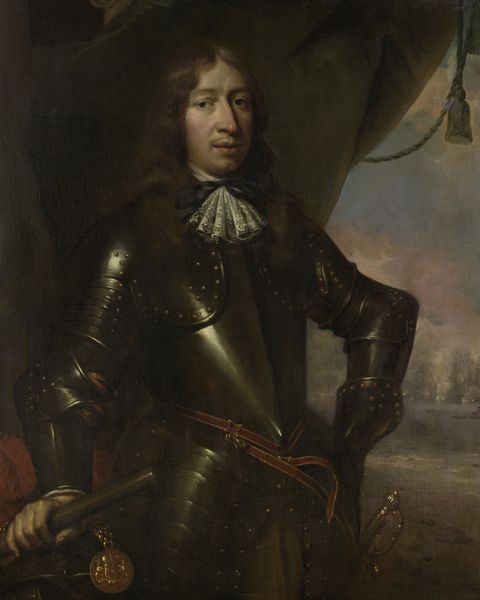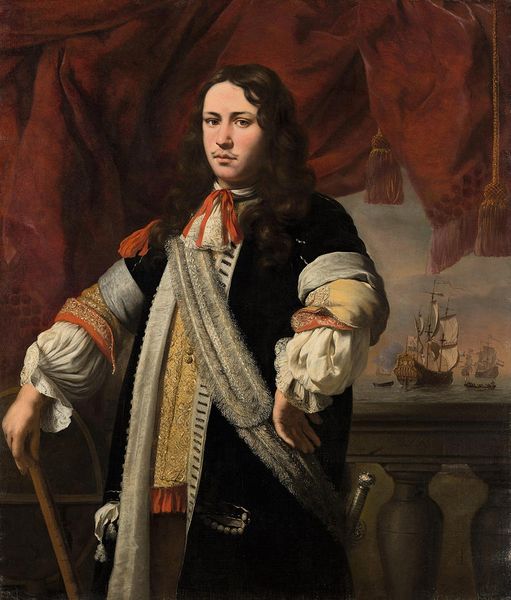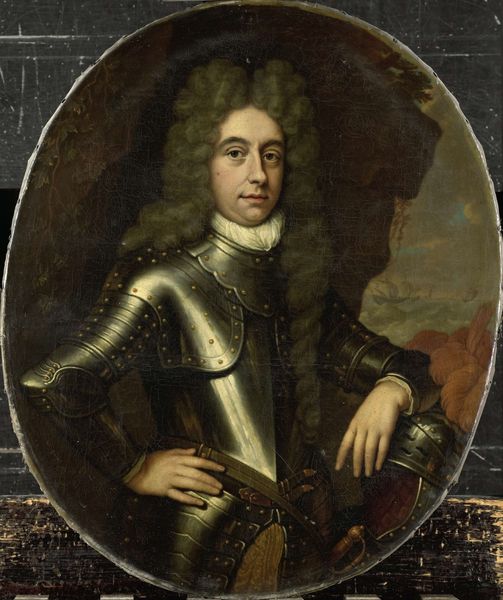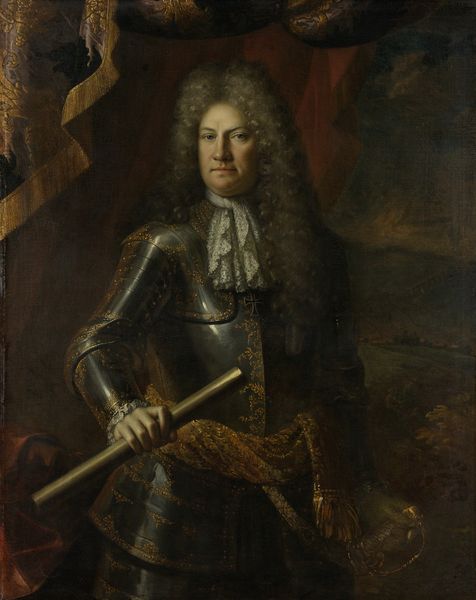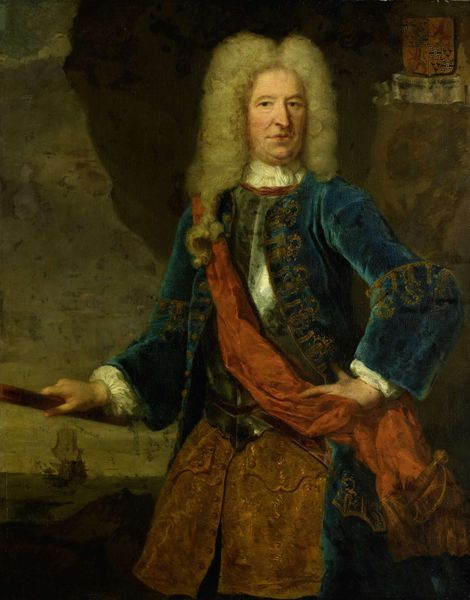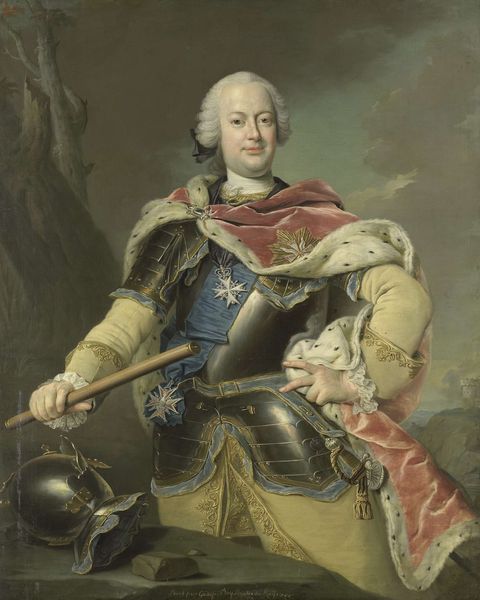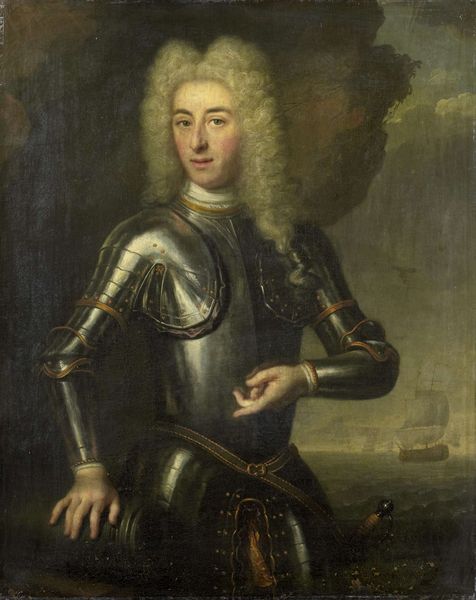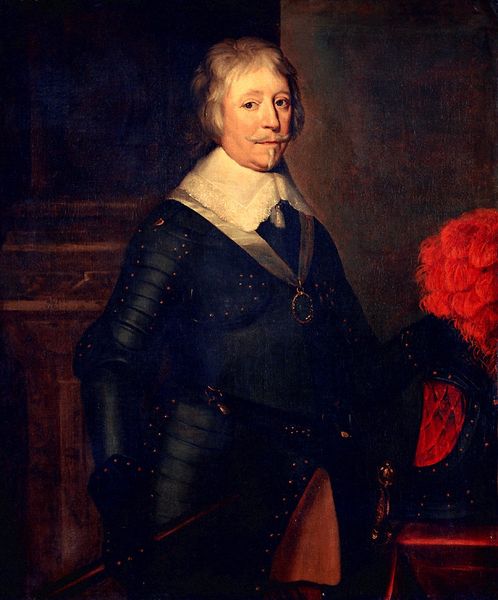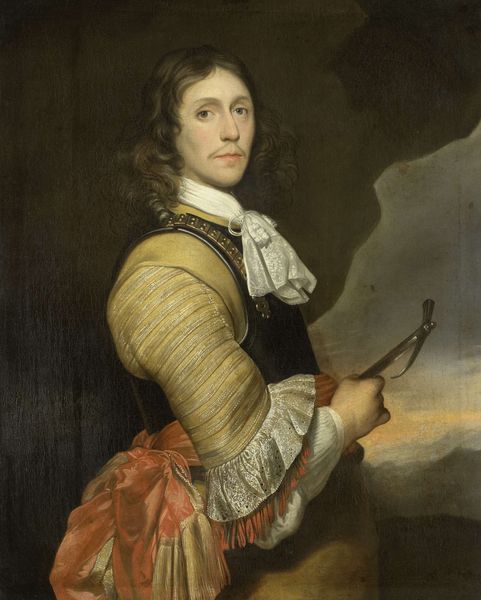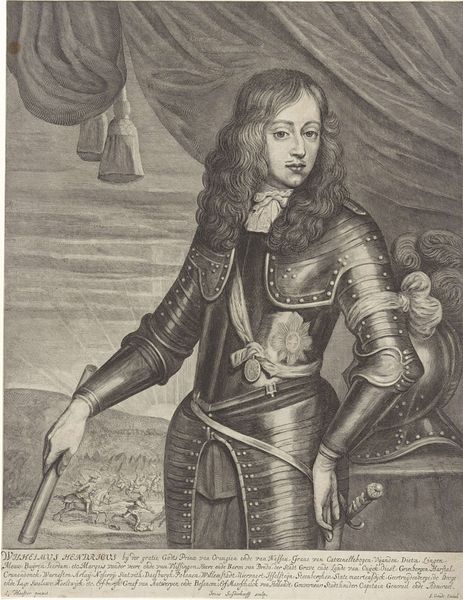
Dimensions: support: 1022 x 762 mm
Copyright: CC-BY-NC-ND 4.0 DEED, Photo: Tate
Curator: Dobson's "Portrait of an Officer" presents a figure in opulent attire, with an air of quiet authority. Editor: There’s a somber stillness about this oil on canvas, a restrained palette that hints at the weight of duty and the coldness of steel. Curator: Indeed. Dobson, active during the English Civil War, captures more than just a likeness; his portraits embody the shifting allegiances and anxieties of the time. Note the helmet in the background, a visual signifier of conflict. Editor: And the officer's hand on that pistol— such a telling detail about the materials and instruments of power. The red sash also draws the eye. It looks almost like a bloodstain. Curator: Precisely. The sash, along with the armor, creates a symbolic barrier, suggesting both vulnerability and strength in the face of societal upheaval. What echoes of leadership do you hear? Editor: I hear the clinking of metal and see the brushstrokes almost like the mark of a blacksmith; now I consider all the hands involved in making this image. Curator: It's a powerful reminder of the complex layers within a single portrait. Editor: Ultimately, Dobson reveals more than just an officer; he reveals a moment caught in time.
Comments
tate 6 months ago
⋮
http://www.tate.org.uk/art/artworks/dobson-portrait-of-an-officer-n04619
Join the conversation
Join millions of artists and users on Artera today and experience the ultimate creative platform.
tate 6 months ago
⋮
Dobson was one of the few top-level painters of his era to have been born in Britain. The rather Venetian freedom with which he handles paint suggests that he must have had access to Charles I's exceptional collection of Italian paintings.This unknown officer holds a horseman's pistol in his left hand. In his right hand is a charging-spanner, which contains priming powder and a spanner for winding up the pistol lock. After the outbreak of the English Civil War, Dobson spent the final part of his life in Oxford, where Charles I and his court lived in near-siege conditions. Gallery label, September 2004


